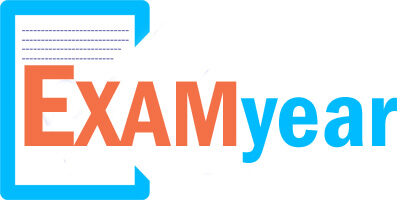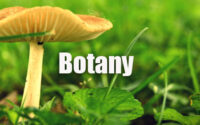Botany GK
1. According to cell theory, cell is :-
A. Basic unit of living beings
B. Smallest unit of life
C. Structural and functional unit of living organisms
D. Self sufficient unit of life
2. Most suitable stage of cell division for study of chromosome morphology:-
A. Meotic prophase
B. Mitotic metaphase
C. Meotic telophase
D. Mitotic prophase
3. Crossing over takes place in which stage of cell division:-
A. Leptotene
B. Pachytene
C. Zygotene
D. Diplotene
4. The work of Gregor Mendel was the extension of experiments conducted by whom:-
A. Knight and Goss
B. G.H.Shull
C. East and Norwich
D. T. Boveri
5. Mendel’s work was published in the year :-
A. 1905
B. 1903
C. 1824
D. 1866
6. The source of dwarfing genes used by N.E. Borlaug was the variety:-
A. Maxico 5
B. Norin 10
C. Lerma Rojo
D. Sonalika
7. The concept of centre of origin was given by :-
A. G.H. Shull
B. Darwin
C. Vavilov
D. Kolreuter
8. Characters found in one species which also occur in other related species refers to the law of :-
A. Law of independent assortment
B. Law of dominance
C. Law of segregation
D. Law of homologous series in variation
9. The ratio of genetic variance to the total variance is known as:-
A. Genetic gain
B. Genetic advance
C. Heritability
D. Inheritance
10. Progeny of single homozygous plant of self pollinated species is known as:-
A. Inbred line
B. Pure line
C. Single line
D. Multi line
11. Cultivation of genotype /entry in new environment is known as :-
A. Domestication
B. Acclimatization
C. Introduction
D. Adaptation
12. A number of superior and similar plants are selected and the seed is mixed in :-
A. Mass selection
B. Bulk Selection
C. Pureline Selection
D. Progeny Selection
13. Pedigree method is mainly used to develop varieties in :-
A. Cross pollinated crops
B. Self pollinated crops
C. Vegetatively propagated varieties
D. Biotechnologically modified varieties
14. Natural selection is preferred to select desirable plants rather than artificial selection in :-
A. Mass selection
B. Bulk Selection
C. Pedigree selection
D. Pureline Selection
15. K 65, K 68 and WL 711 varieties of wheat have been developed by :-
A. Mass selection
B. Back cross method
C. Bulk method
D. Pedigree method
16. Back cross is crossing of F₁ hybrid with :-
A. Any one of its parent
B. Dominant parent only
C. recessive parent only
D. other than parents
17. A mixture of inbred lines that combine favorably in all possible combinations is known as:-
A. Synthetic
B. Hybrid
C. Bulk
D. Mass Selection
18. The estimate of heterosis which has commercial or practical value is known as :-
A. Heterobeltiosis
B. Average heterosis
C. Economic heterosis
D. Heterosis
19. Darwin published the book ” Cross and self fertilization in vegetable kingdom” in the year :-
A. 1700
B. 1876
C. 1908
D. 1909
20. The phenotypic variation within a clone is due to :-
A. Environmental factors
B. Genetic factors
C. Genetic and environmental factors
D. Mutation
| SSC | Quiz |
| IIT JAM | MCQ |
| GATE | Hard Questions |
| Viva | Difficult Questions |
| NET | Short Question |
| Objective | Important Question |
| NEET | Sample Papers |
| Mock Test | Model Question |
| Practice Set | Previous Papers |
| GK |
21. Which of the following is not used directly as a variety:-
A. Clone
B. Pureline
C. F₁ generation
D. Inbred
22. In apomixis:-
A. Seeds are formed and embryo develop through fertilization
B. Seeds are not formed and embryo develop through fertilization
C. Seeds are formed and embryo develop without fertilization
D. Seeds are not formed and embryo develop without fertilization
23. Self pollinated crops are :-
A. Wheat, groundnut ,tomato, sesamum.
B. Rice, pea, bringal, sorghum.
C. Barley, soybean, potato, cotton.
D. Pigeonpea, castor, sugarcane, cowpea
24. The male sterlity most commonly used to develop hybrids in pearl millet and maize is :-
A. Genetic
B. Cytoplasmic
C. Cytoplasmic – genetic
D. None of these
25. In hybrid seed production ‘A’ line is known as:-
A. Restorer
B. Maintainer
C. Male fertile
D. Male sterile
26. Male sterile lines are maintained by crossing them with:-
A. Male sterile lines
B. Male fertile lines
C. Restorer lines
D. Male sterile or fertilie lines
27. White tag is used for :-
A. Breeder seed
B. Foundation seed
C. Certified seed
D. Truthful labelled seed
28. Indian Seeds Act ensures availability of:-
A. Breeder seed to the seed producing agency
B. Pure nucleus seed to maintain seed chain
C. Foundation seed for the production of certified seed
D. Quality seed to the farmers
29. According to Seeds Act, the released and notified crop varieties can be registered for a period of :-
A. 10 years
B. 15 years
C. 20 years
D. 12 years
30. The Seeds Act permits the farmers to :-
A. Use certified seed and sell it with the same brand name only
B. Use and sell his/her produce but not under a brand name
C. Use and sell his produce in his/her own packing
D. Use the produce or sell it only once
31. Protection of variety under PPV & FRA is for :-
A. All varieties
B. Farmers developed varieties/cultures
C. Cultures with novelty,distinctiveness,uniformity & stability
D. Extant cultures only
32. PPV & FRA came into force in the year :-
A. 1966
B. 2001
C. 2004
D. 2005
33. A variety to be registered under plant variety protection act shoud be :-
A. Candidate variety
B. Reference variety
C. Desi variety
D. Example variety
34. Right to commercial seed production, marketing, export-import and authorization are the main features of :-
A. Farmer’s right
B. Plant breeder’s right
C. Community right
D. Property rights
35. To avoid genetic deterioration we have to go for:-
A. Development of new varieties
B. Maintenance breeding
C. sufficient supply of certified seed to the farmers
D. Adoption of seed chain system
36. Isolation distance for foundation seed of soybean is :-
A. 3 meter
B. 10 meter
C. 100 meter
D. 1000 meter
37. Isolation distance in foundation seed production of sorghum is :-
A. 50 meter
B. 100 meter
C. 200 meter
D. 1000 meter
38. Mutation due to x-rays in Drosophilla was discovered by :-
A. Morgan
B. Muller
C. Shull
D. Darwin
39. In general, mutations are:-
A. Recessive and harmful
B. Dominant and harmful
C. Recessive and beneficial
D. Dominant and beneficial
40. In case of mutation in oligogenic traits preliminary yield trial is conducted in :-
A. Third year
B. Fourth year
C. Fifth year
D. Sixth year
41. Non – ionising radiation is:-
A. UV – rays
B. X-rays
C. β – rays
D. γ – rays
42. The term “Heterosis” was first used by :-
A. Darwin
B. Powers
C. Kotler
D. Shull
43. Chief drawback in use of hybrid varieties in self pollinated crops is:-
A. Absence of sufficient heterosis
B. Difficulty in production of large quantity hybrid seed.
C. Absence of heterosis and difficulty in production in large quantity seed
D. Sterlity in F₁ plants
44. Hybrid varieties were first commercially exploited in :-
A. Pearl millet
B. Sorghum
C. Maize
D. Cotton
45. Hybrid varieties makes use of :-
A. GCA (General combining Ability)
B. SCA (Specific combining Ability)
C. Both GCA and SCA
D. Inbreeding depression
46. In single cross hybrid:-
A. Male sterile line is crossed with restorer
B. Male sterile line is crossed with maintainer
C. Maintainer is crossed with restorer
D. Restorer is crossed with male fertile line
47. ‘Bt’ gene for insect resistence in crops like tomato, cotton & maize is obtained from:-
A. Virus
B. Bactetia
C. Fungi
D. Nematod
48. Which one of the following pair is not correctly matched:-
A. Wheat – Raj 3765
B. Mungbean – K851
C. Guar – RSG2
D. Moth – RM0257
49. RHB 177 is popular variety of :-
A. Pearl millet
B. Barley
C. Cowpea
D. Gram
50. The Rajasthan Agriculture Research Institute is situated at:-
A. Udaipur
B. Sriganganagar
C. Mandore, Jodhpur
D. Durgapura, Jaipur

